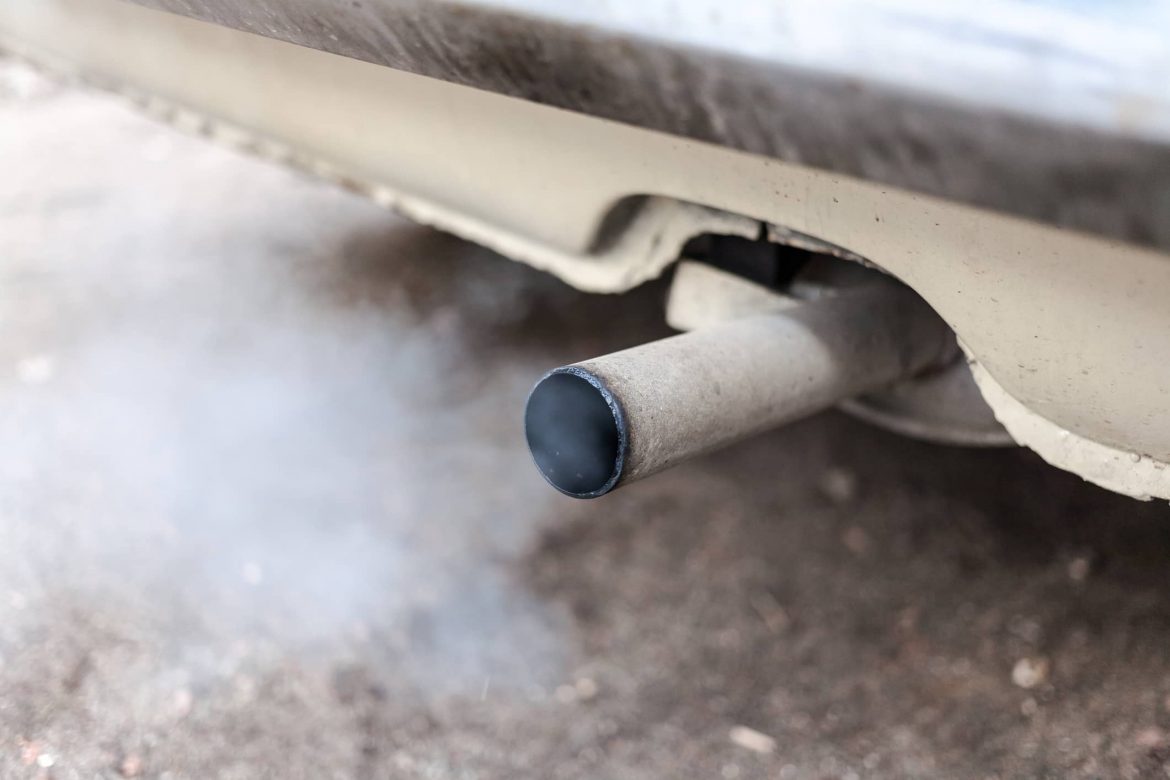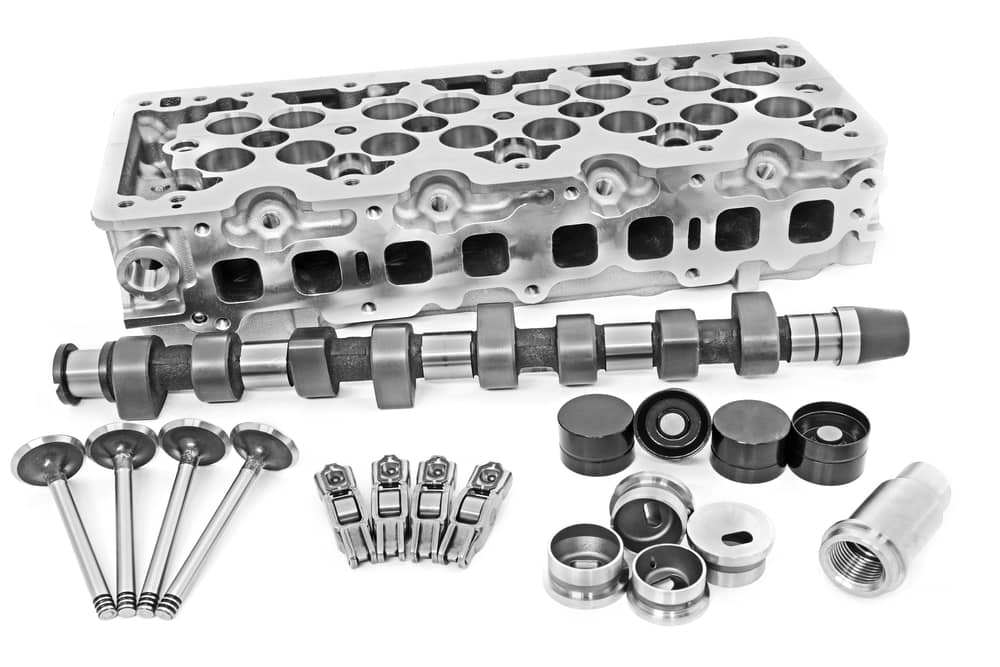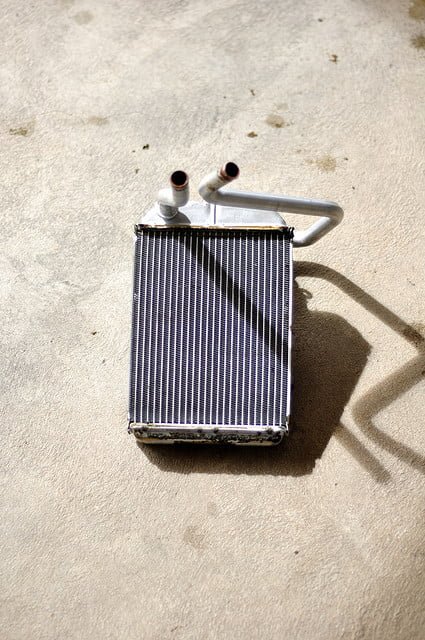Your car is a series of machines that work together in amazing synergy to propel you through space at unnatural speeds. These machines produce fire and explosions and heat and friction; they circulate water, petroleum and other liquids, along with air and grease, and they release steam and smoke in the air. It’s an absolute wonder that they don’t burn up or grind to a halt every other time we use them.
For that, we can thank the various devices employed to cool and lubricate the moving parts of the machines. And keeping those cooling fluids away from the lubricating oils, and both away from the explosions, separating the water from the gasoline, and the coolant from the fire; indeed, keeping all the various elements from interfering with each other, that is the work of gaskets and seals.
When it all comes down to it, your new $50,000 vehicle is completely dependent on an array of flat metal plates and rubber washers that combined cost under 100 bucks.
What are gaskets and seals?
Gaskets are sealing devices, usually composed of a metal composite, that create a pressure-tight barrier between two stationary parts, preventing the flow of gas or liquid from one chamber to another. The most prominent gaskets in a car are:
- Valve cover gasket, which protects the cylinder head hardware and prevents oil from escaping the engine
- Head gasket, which separates the internal combustion process from the rest of the engine
- Exhaust manifold gasket, which prevents exhaust gases from getting into the cylinder head
- Intake manifold gasket, which prevents air from leaking out when fuel is being burned.
These gaskets provide vital protection, like a teacher standing between two fighting students on the middle-school playground, without which the car cannot operate.
Gaskets are solid, or mostly solid, but there is another kind of seal that is not: the o-ring. An o-ring is a round rubber or silicone strip that works to seal joints between parts and prevent leakage. These items must demonstrate the malleability to withstand constant jostling and torquing, and the seals they create must resist temperature and pressure gradients at high speeds over the course of tens of thousands of miles. Our every journey depends upon these humble gaskets and seals, and they usually deliver.
But not always. And not forever.
The potentially catastrophic effects of failing gaskets and seals
Gaskets and seals, wear out, crack, tear, and lose their ability to prevent leaks and seepage. The failure of different kinds of gaskets and seals produce different kinds of problems. A blown seal leads to loss of coolant, gasoline, brake or steering fluid, motor oil, or other fluids. Blown gaskets allow various fluids to enter where they don’t belong, causing all kinds of chaos. Motor oil in the spark plugs can gum up the works and prevent the pistons from pumping and turning the wheels. Coolant in the cylinders can unleash friction, heat, and destruction inside the engine. Blown head gaskets allow everything that doesn’t belong in the engine in and everything that should stay in the engine out.
Most gaskets and seals are relatively inexpensive. The feared head gasket, whose replacement runs into the multiple thousands of dollars, costs under 50 bucks to buy. (The big cost is in disassembling the engine to remove the old gasket and replace it, and then reassembling the engine.) An exhaust manifold gasket runs maybe $20 and many of the ring seals are under $10. Whether the gasket is jacketed, double-jacketed, spiral-wound, or Kammprofile, or the o-ring is single or double thickness, rubber, or silicon, these devices cost a mere pittance compared to the problems they prevent. Many gaskets and seals are quite small, and their contributions to a leak might be difficult to identify at first glance.
To simplify the purchase process, many weekend mechanics purchase gasket kits, which are a full set of gaskets and seals to be used when needed. A full gasket kit might cost $50-$200, depending on the type of your car, the particular gaskets and seals your kit contains, and the quality of the components. Most kits are either compatible with almost any kind of vehicle or specify which ones they are designed to fit. Buying a kit is cost-effective if more than one part is required and can save a lot of time returning to a store to buy another part.
Another inexpensive option when gaskets and seals wear out is to pinpoint the leak and buy a stop-leak product that lubricates and repairs damaged seals. For example, pouring a bottle of BlueDevil Coolant Stop Leak into your radiator after detecting the loss of antifreeze can repair the leak or leaks. Just idle the car for 45 minutes to allow the product to circulate throughout the cooling system and it will bond with metal, rubber, silicone or alloy gaskets and seals to stop minor leaks. (Obviously, you should follow the instructions on the bottle.)
Similarly, pouring a bottle of BlueDevil Power Steering Stop Leak into the steering reservoir and driving around for a while can do the same for gaskets and seals in the power steering system. In both cases, and with many other stop leak and sealer products for various parts of the car, the chemical formula bonds with the seal to lubricate, repair cracks, and restore life to it. These products are safe and effective in all kinds of vehicles but cannot be used to repair major ruptures or holes. For that, it is best to have the gasket or seal replaced.
Removing and replacing gaskets and seals
Gaskets and seals must be replaced whenever they show signs of wear, mostly in the form of leaks, but there are other situations that warrant changing out seals. Any time a joint is disassembled, the seals must be replaced. That is because seals do their work by compressing into the joint and creating a molecule-tight fit. Whenever the parts are replaced, or even moved, the fit of the joint will change, altering the required shape of the seal. If reused, the old seal would form a poor fit and result in leakage of critical fluids. Reusing a seal is a bit like wearing someone else’s prescription eyeglasses.
Mechanics also change out seals as a matter of course whenever they do work on surrounding parts. For example, when replacing a timing belt, which usually occurs around the 100,000-mile mark, they might change out the crankshaft seals as well, seeing as how they have endured the same 100,000 miles of wear. This adds marginally to the cost of a job that is generally expensive anyway and prevents potential trouble down the road.
Changing out most gaskets and seals is a simple proposition if you can get to them easily. The head gasket, rear main seal, timing belt cover seal and many others are located in the engine’s nether regions, requiring significant expertise to access. Numerous other engine parts must be removed to access the gasket or seal and then placed precisely back where they were.
When replacing seals, it is critical to torque the head bolts to the specifications indicated in the owner’s manual. Over-tightening can damage the seal and under-tightening can loosen the joint. For example, an aluminum 5.3 head bolt should be torqued at 45 pounds/foot and a thread sealant or RTV silicone sealer should be applied.
Where to find gaskets and seals
Gaskets and seals are all easily available at any auto parts store. Make sure to purchase the right gaskets and seals for your intended use, and for the make and model of your vehicle. Gasket kits may also be available at your local auto parts store and are definitely available online. Most auto parts store websites help you determine which kit fits your vehicle.
Along with motor oil, the gaskets and seals are the least expensive vital parts in a car (or perhaps they are the most vital inexpensive parts.) Keeping them in good condition and replacing them when necessary will save you a lot of time, trouble and expense.
BlueDevil Products can be found on Amazon.com or at AutoZone, Advance Auto Parts, O’Reilly Auto Parts, NAPA, and other major auto parts retailers.
Related Articles



